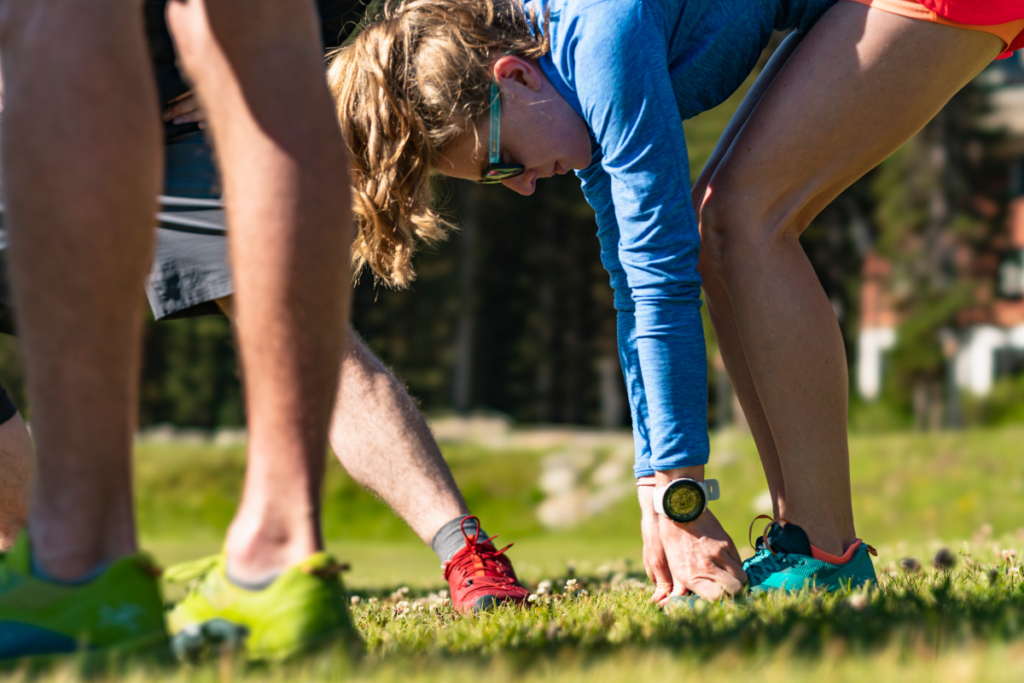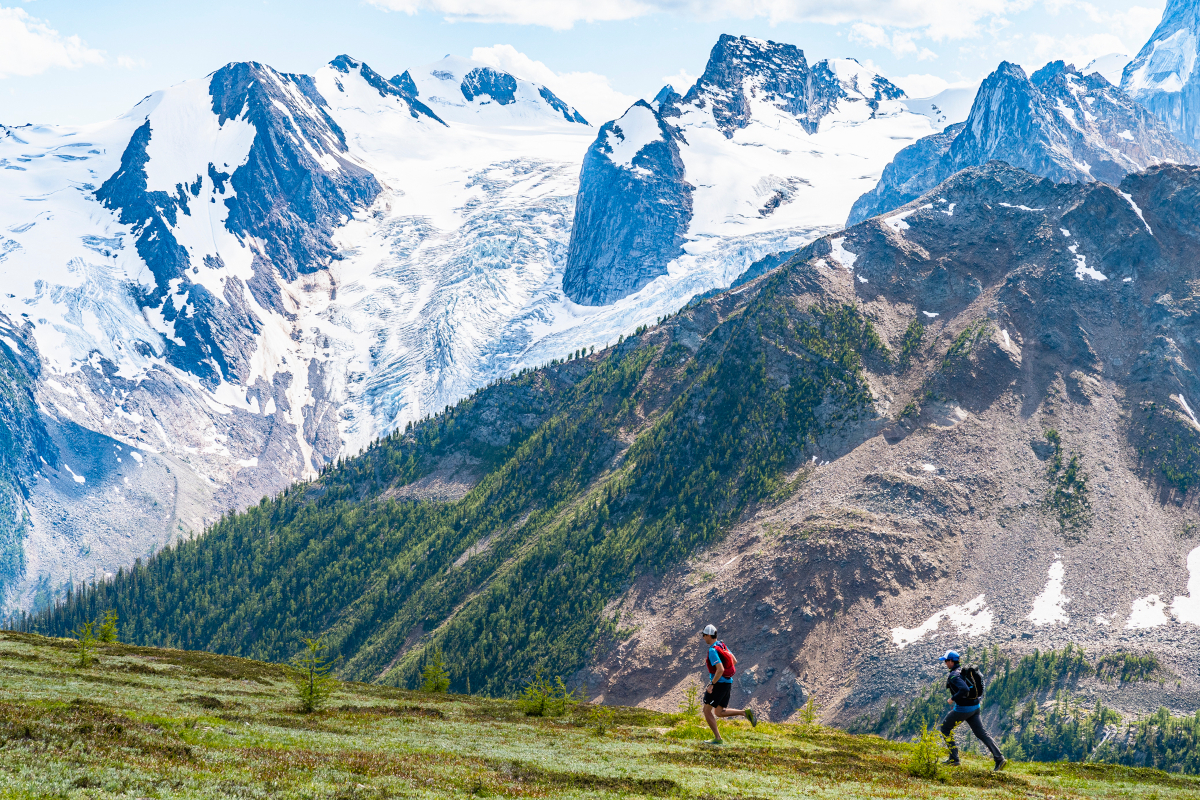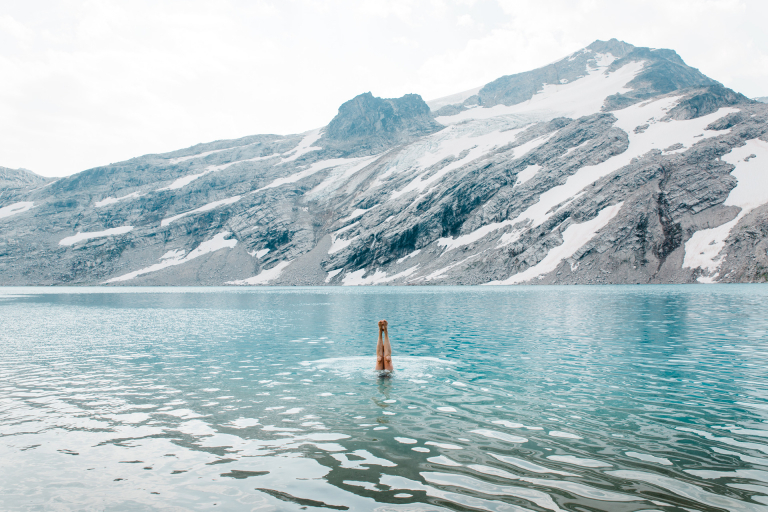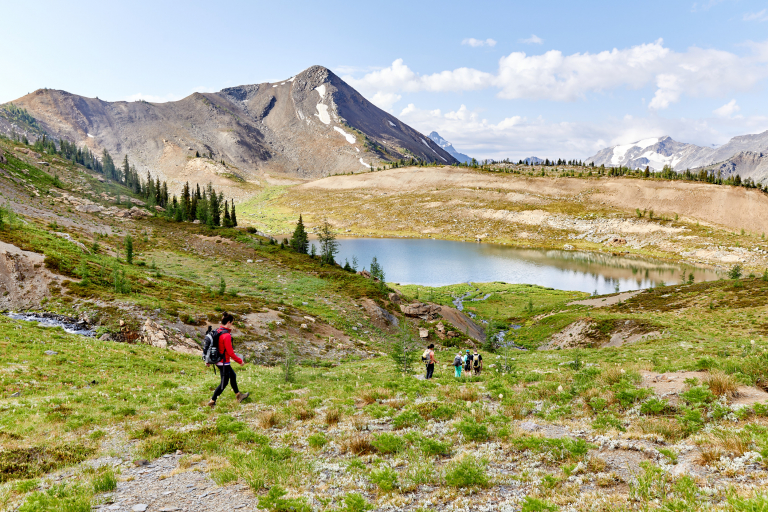June 18, 2021 | Words by Kelsey Verboom
Whether you’re a competitive trail runner with endless mountain miles behind you, or you run regularly but have no specific trail running knowledge, a guided alpine trail running adventure with CMH is an immersive experience that belongs on any runner’s bucket list.
We’re often asked, “Do I need to train for alpine trail running?” or, “How do I train for alpine trail running?”
First, don’t be intimidated – you don’t need to be an elite runner to join this trip. But in order to make the most of this once-in-a-lifetime (or annual?!) experience, here are 5 things you can do in the lead-up to your adventure to help you feel ready to tackle CMH’s mountainous terrain:
1. Get off the gravel
If you’re accustomed to running on city sidewalks or groomed gravel park trails, try to venture off those types of pathways.
- Find some singletrack, like a hiking trail, to run on
- Get a feel for travelling over uneven terrain and practice your strides over roots, rocks and trail profiles that change around every corner
- Get in the habit of looking ahead while you run instead of directly down in front of you. This practice will help you anticipate and react to changing terrain.
However, don’t let limited miles logged on singletrack trails prevent you from joining a trip. Anyone with regular running experience will be capable, says CMH trail running guide Emily Compton.
“Even a couple who usually runs around Central Park or around the streets of LA would have an amazing trip. In fact, this trip will absolutely blow their minds.”
2. Run consistently over progressive distances
Perhaps the most important thing you can do to set yourself up for an enjoyable alpine trail running experience is to run regularly in the months and weeks before your trip.
- Aim for building towards consistently running 3-4 days each week.
- Because your CMH adventure will include 3 back-to-back days of running, you should also be comfortable running 3 days in a row.
On your trip, how far and how fast you’ll run each day, and how much elevation you’ll gain, is entirely dependent on the group’s pace and preferences. The program is flexible and allows for all different levels of trail running. Guides will assess and if needed, split guests into smaller groups with similar running goals.
With that important caveat in mind, here’s a ballpark look at what you can expect on a trip:
- Day 1: Run approximately 5-8 km (3-5 mi) with approximately 200-400 m (650-1,300 ft) ascent
- Day 2: Run up to 10 km (6 mi) with approximately 400-600 m (1,300-1,900 ft) ascent
- Day 3: Run up to 20 km (12 mi) with approximately 500-1000 m (1,600-3,200 ft) ascent
So, when you’re training, think about working towards running 3 days in a row, and progressively increasing the distance over each of the 3 days. Day 1 = up to 8 km, Day 2 = up to 10 km, Day 3 = up to 20 km.
But please keep in mind that this an approximate guide that will almost certainly fluctuate from group to group. For example, if you’re new to trail running or you know your pace is on the moderate end of the scale, you may run 10 km on Day 3, not 20 km. Or, if you bring a group of your competitive trail running friends and you want to cover big distances and move faster, Day 3 may mean more than 20 km.
It all depends on the group, and we’re masters at making it work for everybody (one of the benefits of having a helicopter at our disposal). Don’t let the numbers throw you off! Trust us, you can do this.
3. Practice with your gear
Prevent dreaded blisters and chafing by running with your gear — especially your footwear — multiple times before your trip to break it in and ensure it’s comfortable instead of a distraction.
Day one of your CMH adventure is not the time to be testing out a brand-new pair of trail shoes or your fresh-from-the-store running vest.
Instead, give yourself lots of time in the weeks leading up to your getaway to become comfortable in your gear. Make any needed adjustments to straps, laces, zippers, padding and water bottles beforehand, so you can focus less on gear rubbing in all the wrong places and more on the jaw-dropping vistas surrounding you.
Not sure what to pack? Here are 6 things you should bring >
4. Work on downhill muscles
Trail running involves stretches of running (or often hiking) uphill. But what about running downhill?
“It’s typical to think of running uphill during a trail run,” says Compton. “But people don’t always consider the time we’ll spend descending. It’s a good idea to train not only the muscles you’ll engage when running uphill but working on those downhill muscles as well.”
While on your trip, you’ll receive specific coaching, tips and tricks for trail running scenarios like steep downhill descents. But give a little extra love to working your quadriceps beforehand and your body will thank you later.
If your quads do get tired, enjoy a massage back at the lodge or soak in the hot tub, which happens to have one of the best views in the world.

5. Stretch it out
Keep your muscles healthy and happy by stretching before and after training runs. This can help prevent a running injury in the lead-up to your trip.
While at CMH, you’ll be invited to a dynamic warm-up class every morning to get your muscles moving before loading into the heli for a day of incredible adventures in the mountains.
> Learn more: Guided alpine trail running trips with CMH
> Read more: 6 things you should pack alpine trail running




